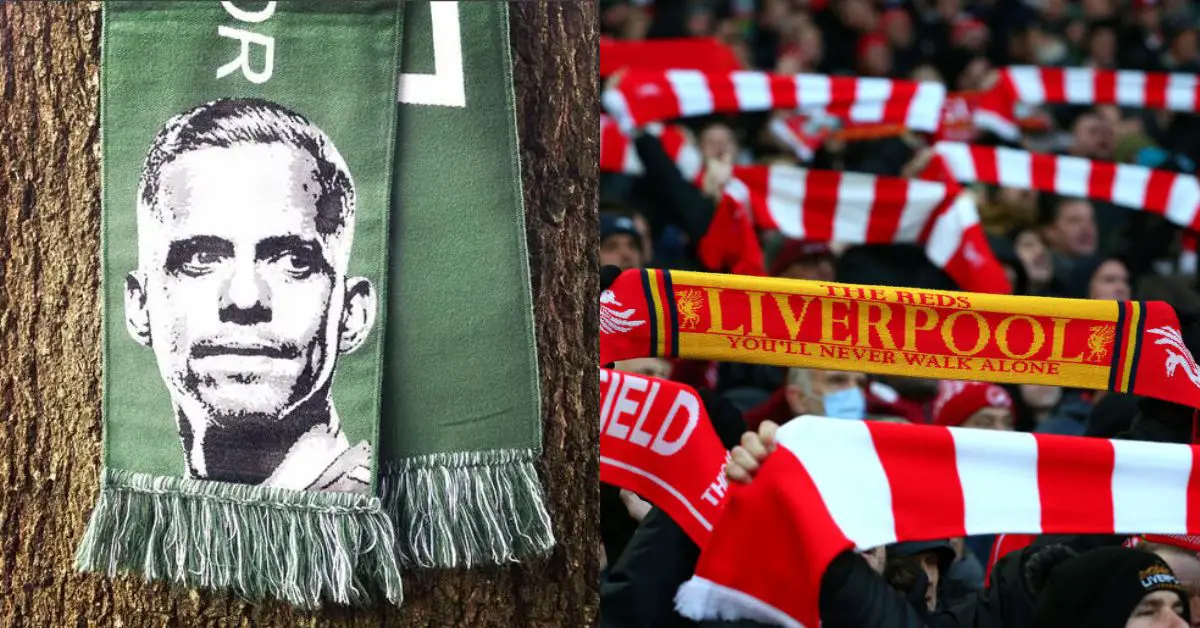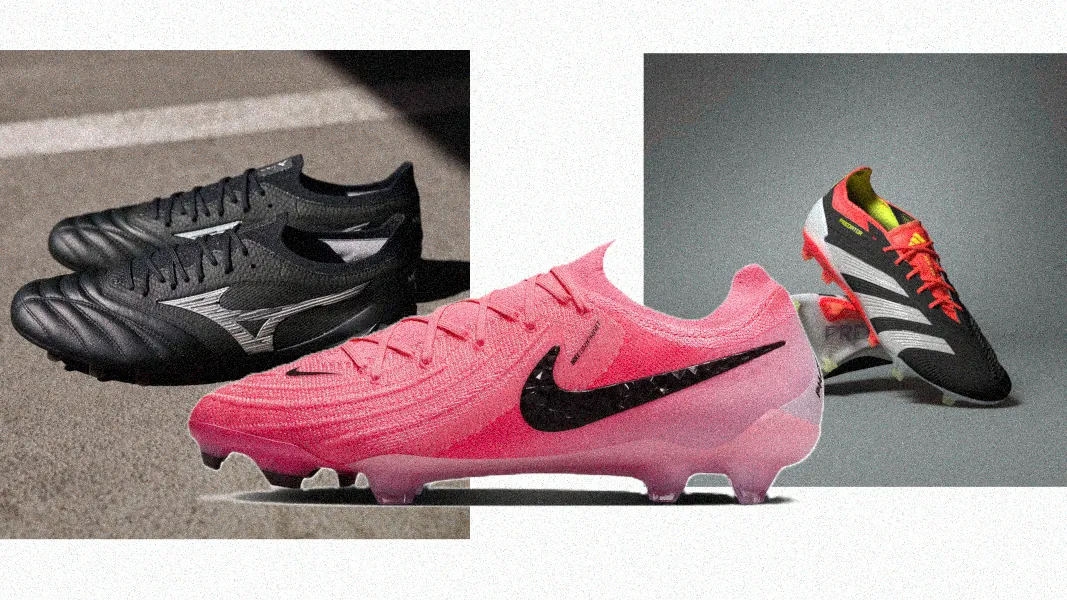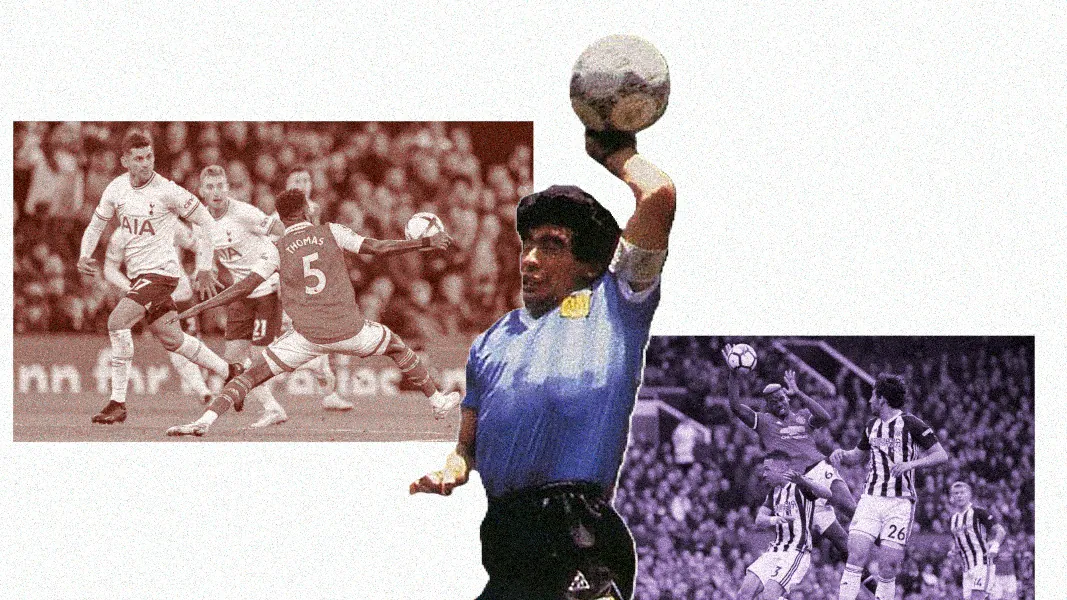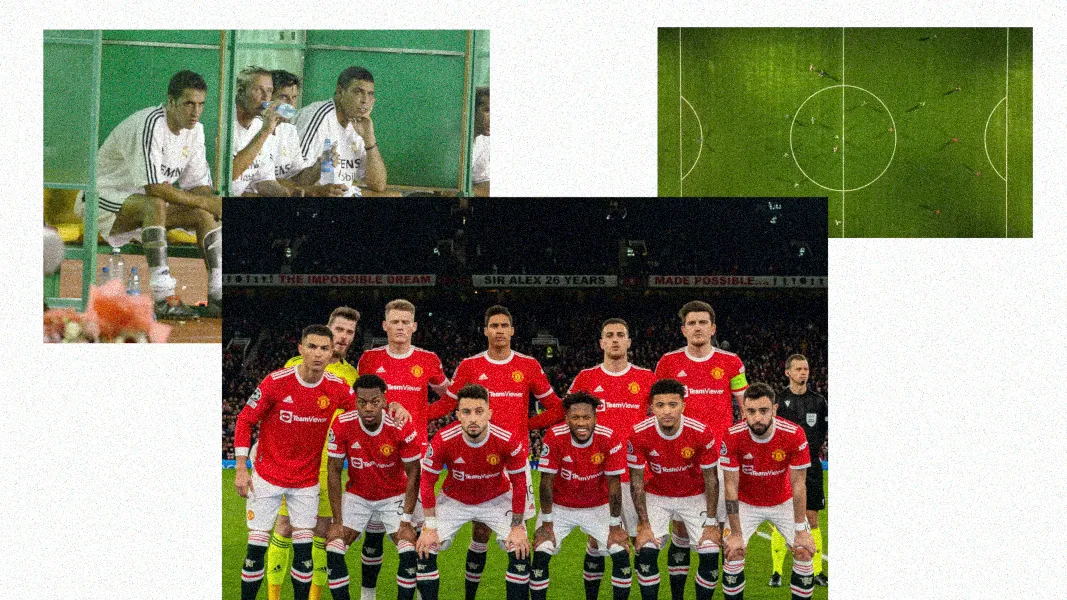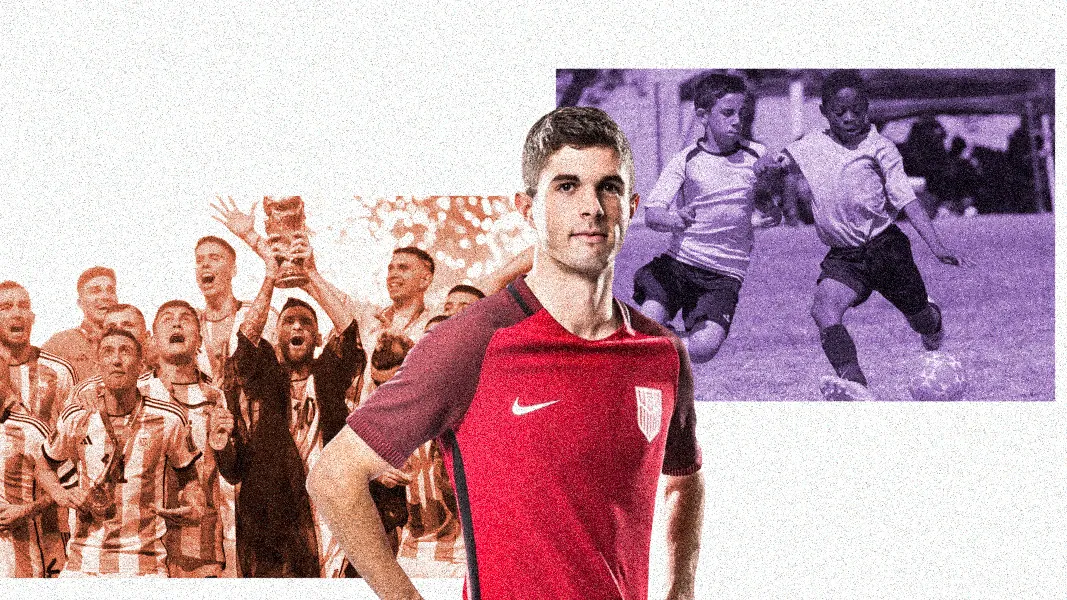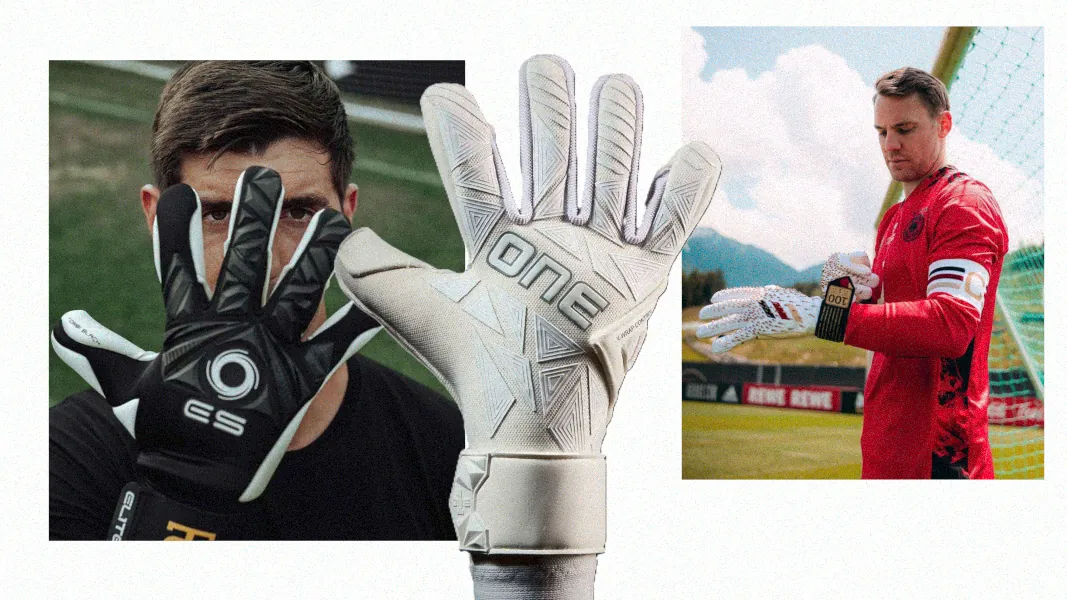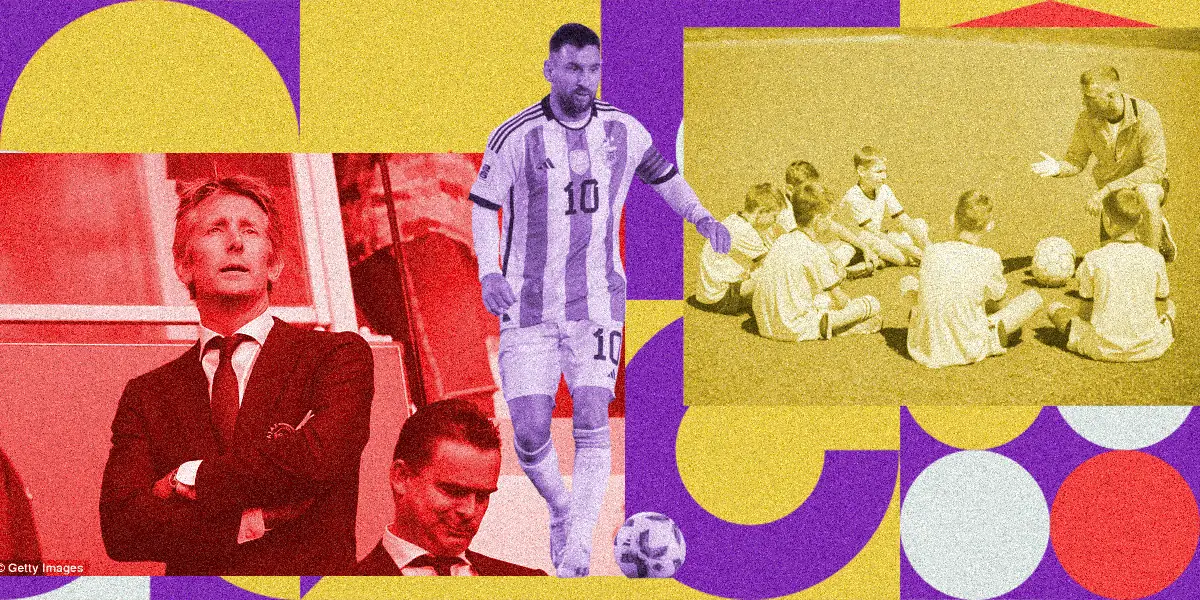Have you ever wondered why do soccer fans wear scarves during matches? The answer lies in a fascinating blend of tradition, team allegiance, and a desire to stand out in the crowd.
In this article, we’ll delve into the origins and reasons behind this cultural practice.
The Origin and Evolution of Soccer Scarves
The journey of soccer scarves from simple accessories to powerful symbols of fan loyalty is a tale that spans decades. Back in the early 1930s, colorful scarves started making their appearance in soccer culture. These scarves, often knitted in teams’ colors, weren’t just about keeping fans warm – they were a way to declare allegiance to a specific team.
While the initial scarves were likely knitted by wives or mothers of fans, it wasn’t until the 1970s that scarf-wearing became a common sight at soccer games. In those early days, scarves were typically solid in color or adorned with basic stripes.
Embroidering players’ names onto scarves added a personal touch that allowed fans to showcase their favorite players.
Over time, the soccer scarf evolved into a canvas of creativity. No longer confined to simple designs, scarves now sport a wide range of intricate patterns, team logos, and even meaningful words. This evolution in design mirrors the profound shift scarves have undergone in their significance.
While wool was the material of choice in the past, acrylic has gained prominence due to its versatility and comfort. Despite the changes in design and materials, the essence of the soccer scarf remains unchanged – a visual representation of unwavering support and a shared identity among fans.
The historical trajectory of soccer scarves reveals how a simple accessory transformed into a cherished tradition, marking the evolution of fan culture within the beautiful game.
The Symbolic Power of Scarves in Soccer Fandom
Soccer scarves have transcended their role as mere fashion accessories, becoming powerful symbols of team allegiance and fan unity. These colorful pieces of fabric hold a deeper meaning in the hearts of supporters, representing much more than just warmth on a chilly match day.
Originally, woolen scarves were knitted in teams’ colors by dedicated family members, often wives or mothers. These scarves were worn with pride, serving as a visible declaration of which team a fan supported.
They became an extension of a fan’s identity, allowing them to stand out in a sea of supporters and proudly display their affiliation.
The power of soccer scarves lies not only in their visual impact but also in the sense of community they foster, just like in the above picture where Liverpool fans donated scarves that they collected from around the world.
The collected scarves were placed on empty seats during the memorial service marking the 25th anniversary of the Hillsborough Disaster, at Anfield Stadium on April 15, 2014.
Fans raising their scarves in unison during chants and anthems creates a breathtaking spectacle. The sea of team colors waving in the air symbolizes solidarity, dedication, and a shared purpose.
As the designs and styles of scarves have evolved, so too has their symbolic significance. Modern scarves incorporate intricate patterns, team logos, and even phrases that hold sentimental value for fans.
Beyond the stadium, these scarves are often worn in everyday life, further reinforcing the bond between fans and their beloved teams.
Scarves: From Interwar Period to Modern Soccer Culture
The history of soccer scarves traces back to the interwar period, capturing a journey of cultural transformation and enduring tradition. While scarves have always been a means of warmth and comfort, they took on a new role as powerful symbols of team affiliation during this time.
Historical photographs provide a glimpse into the early adoption of scarves by soccer fans in Britain. These scarves, often simple and unembellished, carried a profound meaning. Fans wore them not just to stay warm in open-air stadiums, but to visibly demonstrate their support for their chosen teams.
As the years progressed, the symbolic significance of soccer scarves intensified. The surge of popular culture in the 1960s played a pivotal role in elevating scarves from functional accessories to statements of passion. The scarves became more than just items to wave; they became emblems of identity, solidifying the bond between fans and their clubs.
Modern soccer culture embraces scarves as a cherished tradition that spans generations. Scarves, once basic in design and materials, now boast intricate details that celebrate team history, achievements, and values.
Soccer Scarves: Statement Piece
These scarves are sometimes also used to make powerful statements to garner the attention of the world.
For instance, In the picture below, Ukraine soccer federation chief and lawmaker Andriy Pavelko, wearing a T-shirt of the Croatian football team, holds a scarf with the sign “Croatia” during the parliament session in Kiev on July 10, 2018.
Here the soccer scarf was used for a political statement when The Croatian soccer association had ejected his expert associate and FIFA fined Vukojevic $15,000 over an Instagram video featuring him and Croatia defender Domagoj Vida, who shouted “Glory to Ukraine!”.
But the moves sparked the ire of Ukrainians towards FIFA and, on the contrary, a wave of support for both representatives of the Croatian team.
They represent a bridge between the past and the present, carrying with them the legacy of unwavering support that has been passed down through the years.
Soccer Scarves as Merchandise and Memorabilia
Beyond their role as symbols of team support, soccer scarves have evolved into merchandise that holds sentimental value for fans and generates revenue for clubs.
Soccer clubs recognized the emotional attachment fans had to scarves, leading to the production of official team merchandise. Scarves featuring team logos, colors, and slogans quickly became sought-after items in club shops and online stores. Fans eagerly purchased these scarves as a way to not only display their allegiance but also to own a piece of their team’s identity.
Collecting soccer scarves has become a passionate hobby for many enthusiasts. Scarves from different matches, seasons, and competitions serve as tangible reminders of the memorable moments they’ve witnessed. For example, Scarves for different World Cups are worthy collectibles in any soccer fanatic’s collection.
MLS Soccer Scarves
The allure of soccer scarves transcends geographical boundaries and even defies the constraints of varying climates. Even in regions with scorching summers, where the Major League Soccer (MLS) season stretches from March to October, the tradition of wearing scarves remains unyielding.
But how do fans reconcile the heat with the cozy image of scarves? The solution lies in the adaptability of the tradition. Enter lightweight scarves, crafted to provide the sense of unity and identity that soccer scarves embody, without adding unnecessary warmth.
These scarves, designed with lighter fabrics and innovative materials, allow fans to showcase their allegiance while staying comfortable in the heat. The fact that soccer scarves endure regardless of temperature underscores their immense significance.
The willingness to wear these scarves despite uncomfortable conditions speaks to the deep connection fans feel toward their teams. It’s a testament to the unbreakable bond that unites fans across the globe, regardless of the weather.
Frequently Asked Questions (FAQs)
Fans hold their scarves during matches, using them as emblems of team loyalty, pride, and reverence. Soccer scarves have gained such prominence as accessories that they are not left behind even after the game schedule has been adjusted to avoid winter weather,
During the initial era, scarves were skillfully knitted by grandmothers, intended for their families to sport during games. This unique tradition led to them being fondly dubbed “granny-scarves.”
The tradition of soccer fans wearing scarves began in the early 1930s and gained widespread popularity in the 1970s. These scarves, often knitted in team colors, were initially made by family members and served as a way to visibly express support for specific teams.
Soccer scarves hold a strong cultural and emotional significance. Despite warmer temperatures, fans continue to wear lightweight scarves to demonstrate allegiance and unity. These scarves provide a sense of identity without adding extra warmth or bulk.
